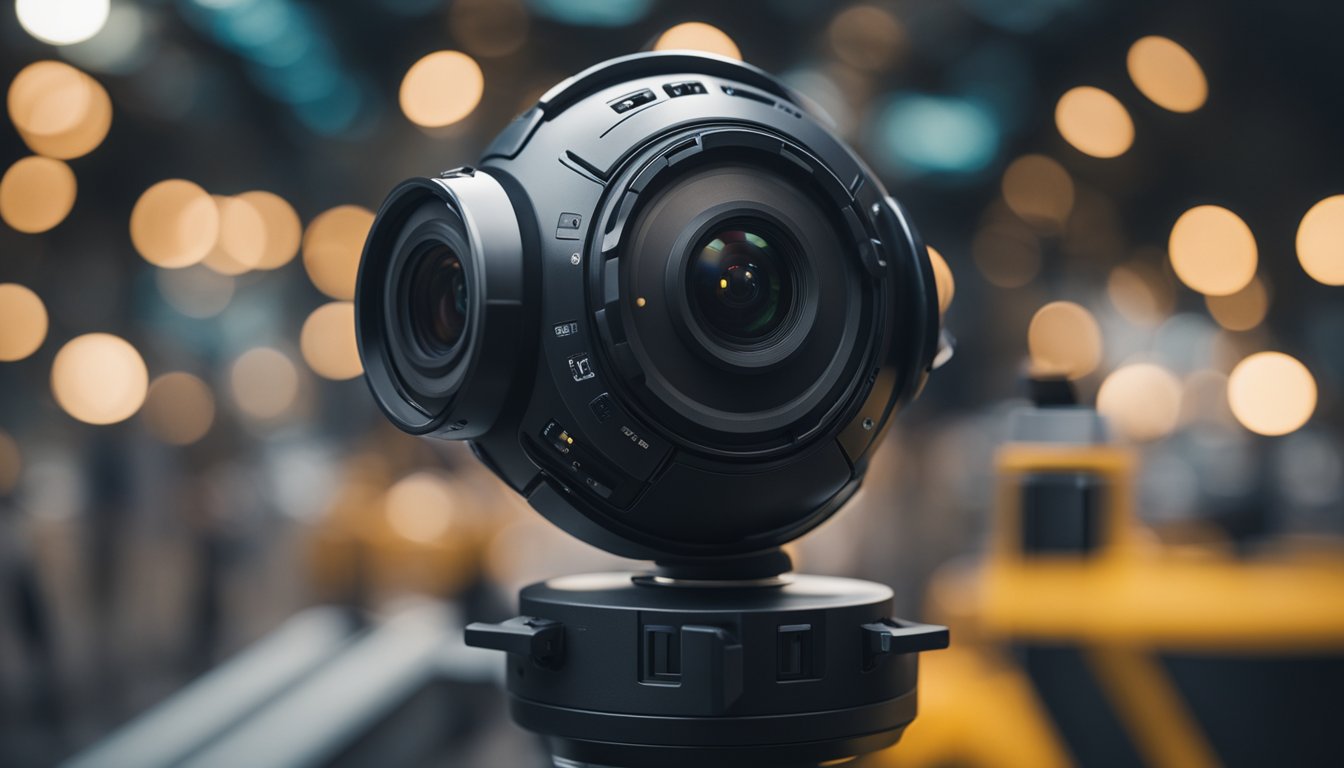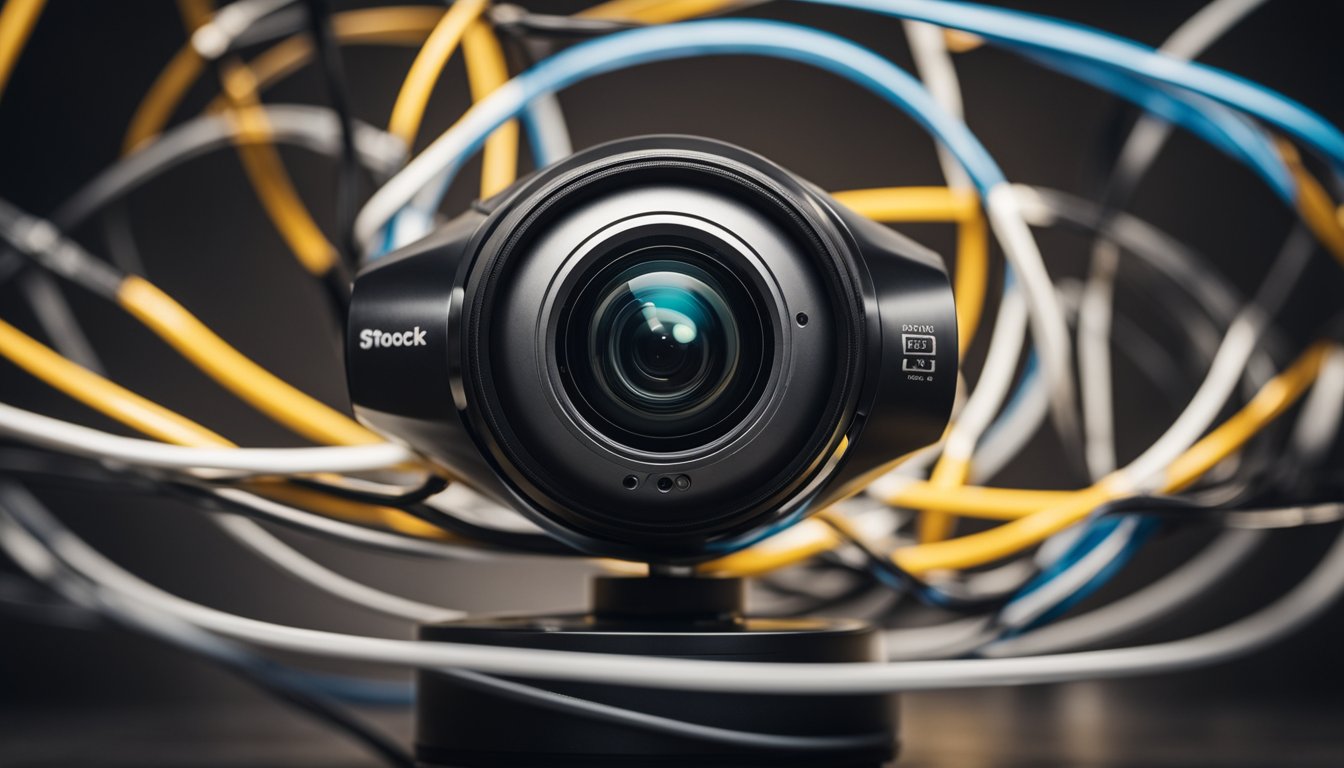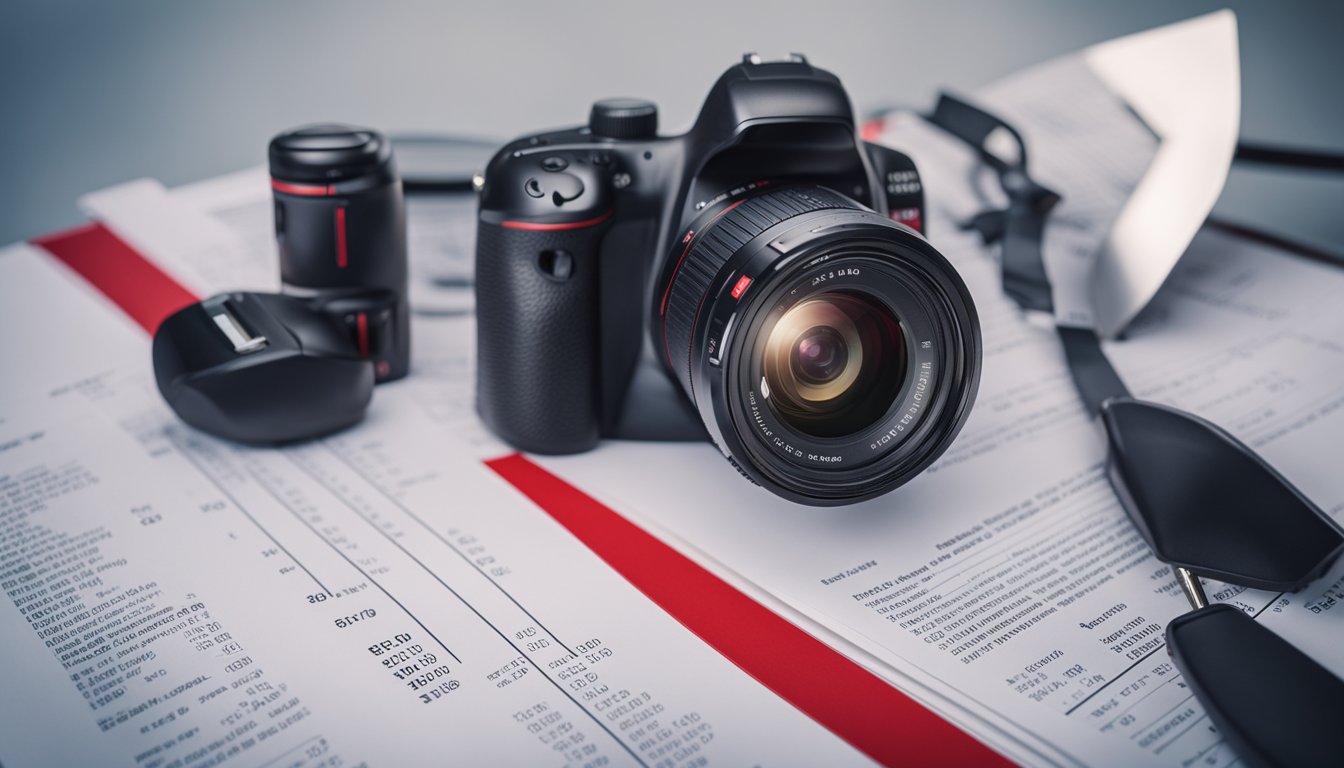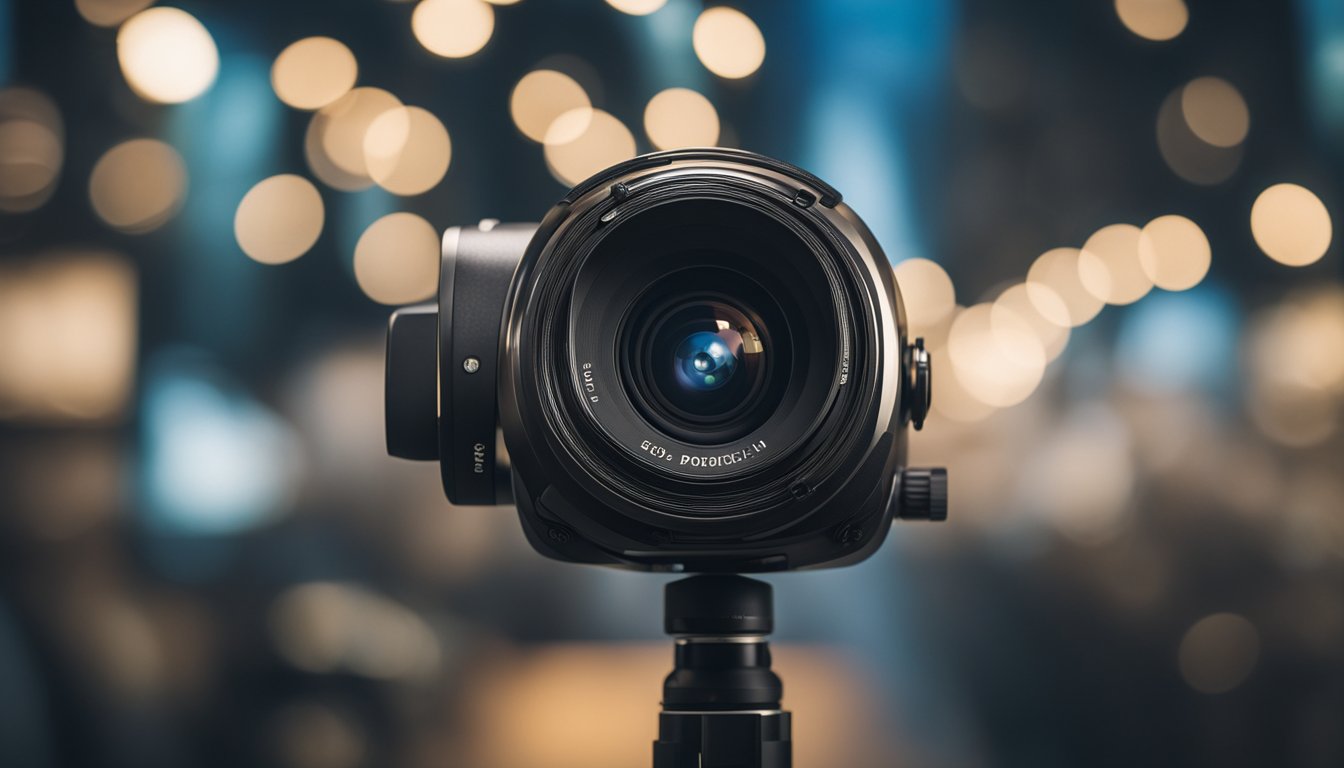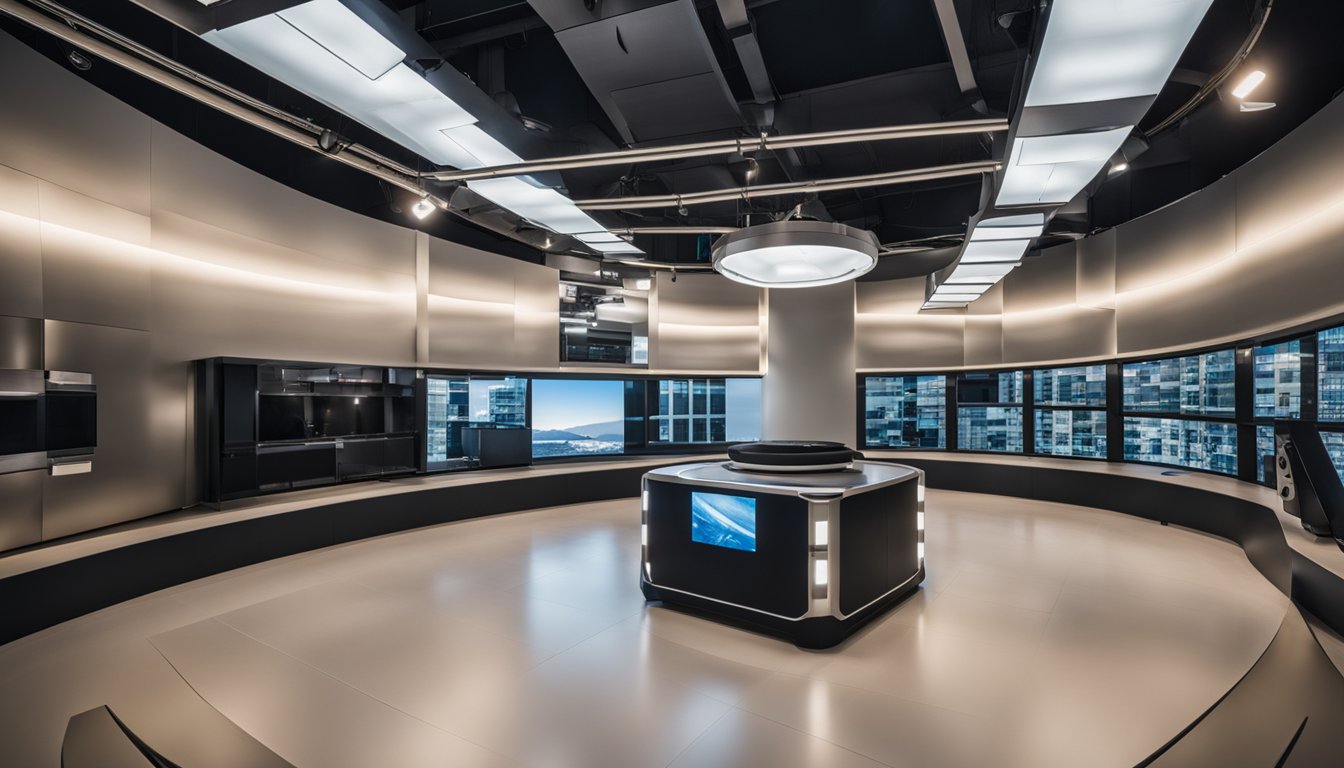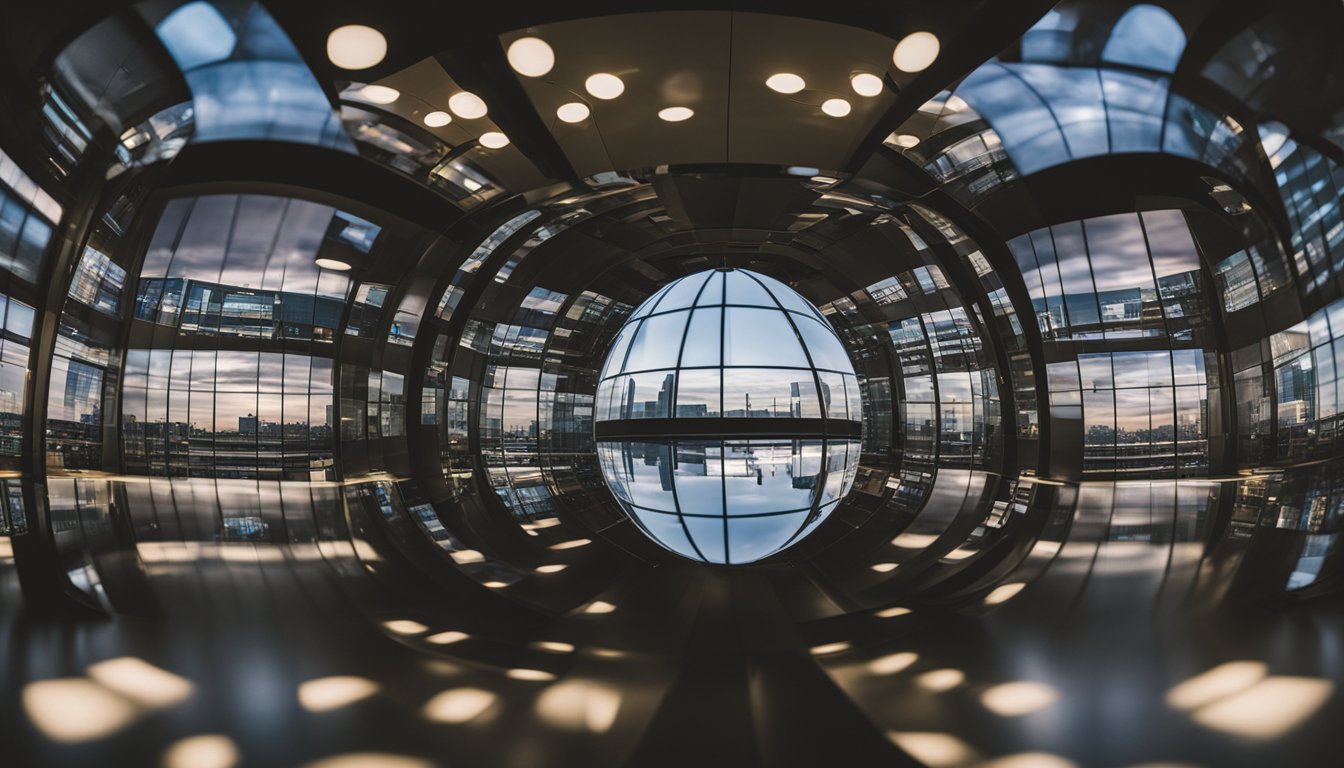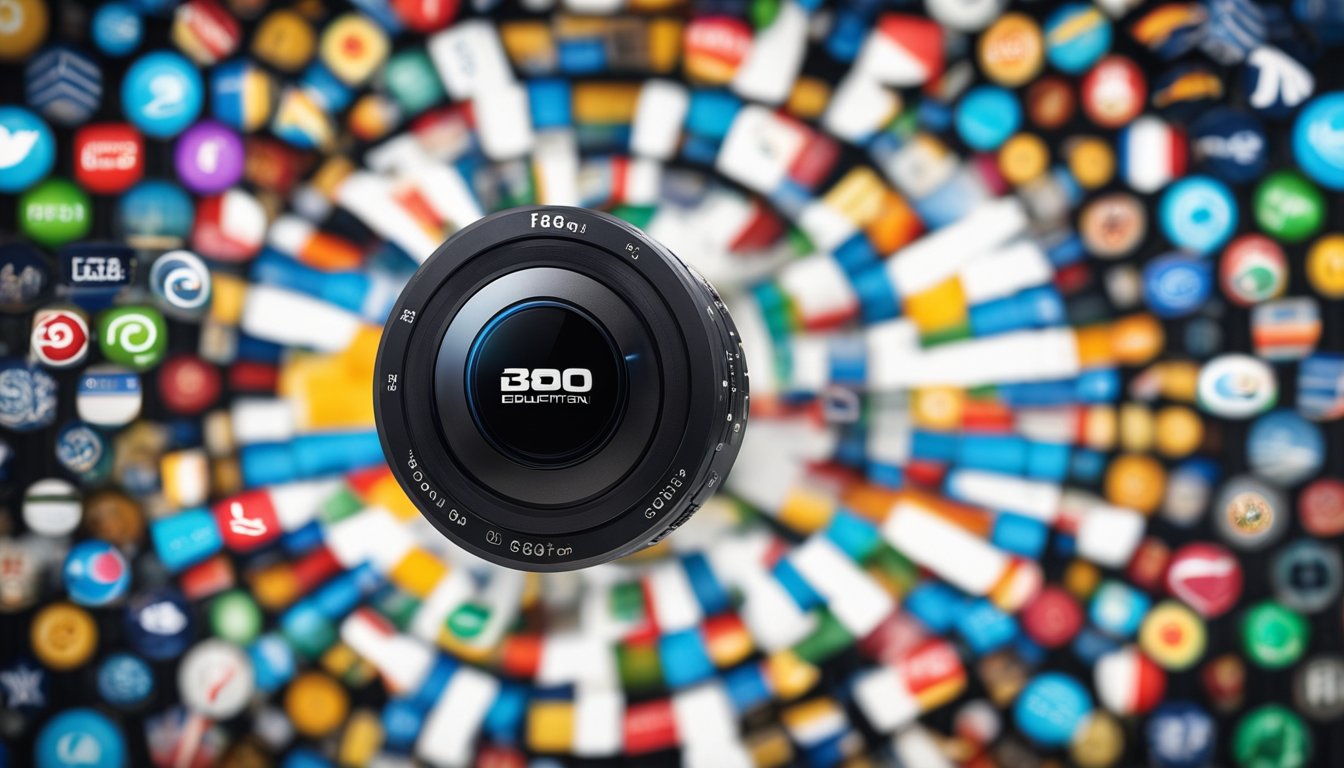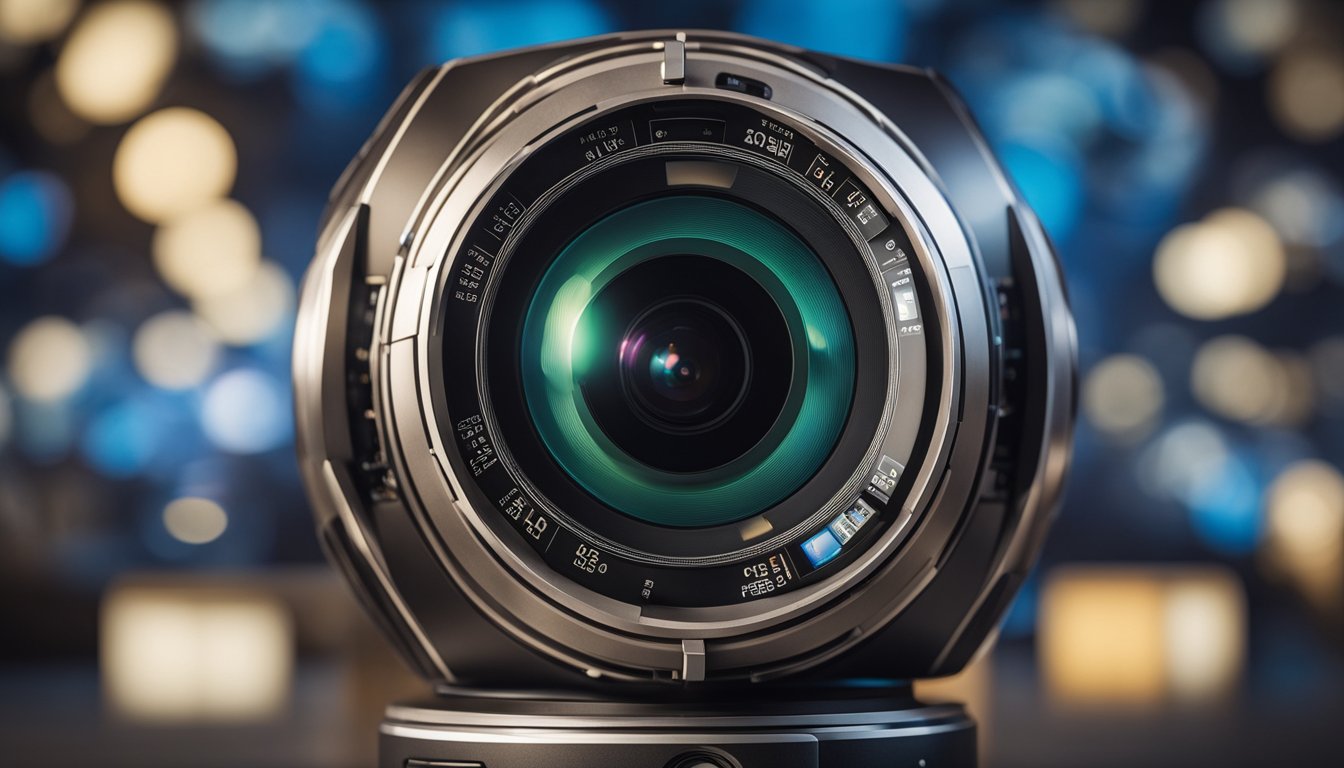If you are a photographer or a videographer, you might have heard of the 360-degree camera. It is a device that captures everything in your surroundings, giving you a panoramic view of the scene. However, as with any technology, there are disadvantages to using a 360-degree camera. In this article, we will discuss some of the drawbacks of using a 360-degree camera.
One of the main disadvantages of a 360-degree camera is the technical limitations. While the camera can capture everything around you, the quality of the image or video might not be as good as a regular camera. The resolution might be lower, and the image might be grainy. Additionally, the stitching process of the 360-degree camera can sometimes produce errors or distortions in the image.
Key Takeaways
- 360-degree cameras have technical limitations that can affect the quality of the image or video.
- Design and usability drawbacks can make using a 360-degree camera challenging.
- Hardware and compatibility issues can limit the practical usage of a 360-degree camera.
Technical Limitations
https://www.youtube.com/watch?v=BgkGXzjwZEs&embed=true
When it comes to 360-degree cameras, there are some technical limitations that can affect the quality of your footage. In this section, we will discuss some of the most common technical limitations of 360-degree cameras.
Resolution and Image Quality
One of the biggest challenges with 360-degree cameras is capturing high-quality footage. While some 360-degree cameras offer high resolution, many do not. This can lead to blurry or pixelated footage, which can be especially noticeable when viewing the footage on a large screen.
Lighting and Exposure Challenges
Lighting and exposure can also be a challenge when using a 360-degree camera. Because the camera captures everything around it, it can be difficult to control the lighting and exposure in the scene. This can lead to overexposed or underexposed footage, which can be difficult to correct in post-production.

Stitching Imperfections
Another common issue with 360-degree cameras is stitching imperfections. When you capture footage with a 360-degree camera, the camera stitches together multiple images to create a seamless 360-degree view. However, this stitching process is not always perfect, and can result in visible stitch lines or other imperfections in the footage.
To mitigate these issues, it’s important to choose a high-quality 360-degree camera with a high resolution and good low-light performance. Additionally, it’s important to pay attention to the lighting and exposure in your scene, and to be aware of the potential for stitching imperfections. With careful planning and attention to detail, you can minimize these technical limitations and capture high-quality footage with your 360-degree camera.
Design and Usability Drawbacks
https://www.youtube.com/watch?v=IScm4K0PE-U&embed=true
While 360-degree cameras offer a unique and immersive perspective, they also come with some design and usability drawbacks that you should be aware of before making a purchase.
Ergonomic Constraints
360-degree cameras are often compact and come with a spherical shape, which can make them difficult to hold and handle. This can lead to ergonomic constraints and make it challenging to keep the camera steady while capturing images or videos. Additionally, the placement of the camera’s buttons and controls may be awkward and require some getting used to.
Photographer Appears in Images
« Can Mi 360 Camera Record Without Wifi? A Quick Guide
Do Jeep Wranglers Have 360 Cameras? Upgrade Your Ride Now »
Another significant drawback of 360-degree cameras is that the photographer often appears in the images and videos captured. This can be a problem if you want to capture a scene without any distractions or if you want to remain anonymous. While some 360-degree cameras come with a feature that allows you to edit out the photographer, it can be time-consuming and may not always produce the desired results.
Limited Zoom Capabilities
One of the most significant limitations of 360-degree cameras is their limited zoom capabilities. Due to the nature of their design, 360-degree cameras cannot zoom in on a specific area of the scene. This can be a problem if you want to capture a specific detail or object in the distance. While some 360-degree cameras come with a digital zoom feature, it can result in a loss of image quality.
In conclusion, while 360-degree cameras offer a unique and immersive perspective, they also come with some design and usability drawbacks. These drawbacks include ergonomic constraints, the photographer appearing in images, and limited zoom capabilities. It is essential to consider these factors before making a purchase to ensure that a 360-degree camera is the right choice for your needs.
Hardware and Compatibility Issues
When it comes to 360-degree cameras, there are some hardware and compatibility issues that you should be aware of before making a purchase. In this section, we’ll cover some of the most common issues that you might encounter.
Camera Settings and Controls
One of the biggest challenges of using a 360-degree camera is getting the settings and controls right. With so many different angles and perspectives to consider, it can be difficult to know exactly what settings to use for each shot. This can lead to blurry or distorted images, which can be frustrating for both amateur and professional photographers.
To avoid this problem, it’s important to take the time to learn how to use your camera’s settings and controls properly. This might involve experimenting with different settings until you find the right combination for each situation. You may also need to invest in additional equipment, such as a tripod or stabilizer, to help you get the perfect shot.
Device Compatibility
Another issue that you might encounter when using a 360-degree camera is compatibility with your other devices. Some cameras are designed to work only with certain types of smartphones or other devices, which can be frustrating if you have a different type of device.
To avoid this problem, it’s important to check the compatibility of your camera with your other devices before making a purchase. You may also need to download additional software or apps to ensure that your camera works properly with your other devices.
Additional Equipment Needs
Finally, it’s worth noting that using a 360-degree camera often requires additional equipment beyond just the camera itself. For example, you may need a tripod or stabilizer to help you get steady shots, or you may need additional lighting to ensure that your shots are well-lit.
To avoid unexpected expenses, it’s important to consider the additional equipment needs of your camera before making a purchase. You may also want to budget for these additional expenses when planning your photography projects.
Overall, while 360-degree cameras can be a powerful tool for capturing immersive images and videos, they do come with some hardware and compatibility issues that you should be aware of. By taking the time to learn how to use your camera properly and investing in the right additional equipment, you can overcome these challenges and capture stunning 360-degree images and videos that will impress your friends and clients alike.
Post-Production Challenges
https://www.youtube.com/watch?v=7gQZSXdZDyo&embed=true
Working with 360-degree cameras can be a challenge, especially when it comes to post-production. Here are some of the common challenges you may face when editing footage from a 360-degree camera:
Complex Editing Process
Editing 360-degree footage requires more time and effort than traditional video editing. This is because 360-degree cameras capture footage from all angles, which means that you need to stitch together multiple video feeds into a single video. This process can be time-consuming and requires a lot of processing power.
Furthermore, editing 360-degree footage requires a different approach than traditional video editing. You need to consider the viewer’s perspective and ensure that the footage is seamless and doesn’t cause motion sickness. This means that you need to be mindful of the camera’s placement and movement during filming.
Software Requirements
To edit 360-degree footage, you need specialized software that can handle the complex stitching process. This software can be expensive and requires a powerful computer to run smoothly. Some popular software options for editing 360-degree footage include Adobe Premiere Pro, Final Cut Pro, and CyberLink PowerDirector.
Additionally, when working with 360-degree cameras, you need to ensure that your SD card has enough storage space to capture the footage. 360-degree footage requires more storage space than traditional video footage, so it’s important to have a high-capacity SD card to avoid running out of space mid-shoot.
In summary, post-production for 360-degree cameras can be a complex and time-consuming process. You need specialized software, a powerful computer, and a high-capacity SD card to ensure that your footage is seamless and professional-looking.
Financial Considerations
If you’re considering purchasing a 360 degree camera, there are several financial considerations to keep in mind. Here are some of the key factors to consider:
Higher Cost of Ownership
One of the biggest downsides of 360 degree cameras is their higher cost of ownership. Compared to traditional cameras, 360 degree cameras can be significantly more expensive. For example, the Insta360 ONE X2 currently retails for around $429.99. While there are cheaper options available, you’ll generally need to spend more to get a high-quality 360 degree camera.
In addition to the upfront cost of the camera itself, you may also need to purchase additional accessories. For example, you may want to invest in a protective case to keep your camera safe while you’re out and about. These additional costs can quickly add up, making 360 degree cameras a more expensive option overall.
Maintenance and Accessories
Another factor to consider is the ongoing cost of maintaining your 360 degree camera. Depending on the model you choose, you may need to purchase additional accessories such as lenses or tripods. In addition, you’ll need to keep your camera clean and well-maintained to ensure that it continues to function properly.
Over time, you may also need to replace certain parts or accessories as they wear out or become damaged. For example, you may need to replace the battery or charger if they stop working properly. These ongoing maintenance costs can add up over time, making 360 degree cameras a more expensive option compared to traditional cameras.
Overall, while 360 degree cameras offer some unique benefits, they can also be more expensive to own and maintain compared to traditional cameras. It’s important to carefully consider your budget and needs before making a decision to invest in a 360 degree camera.
Content Sharing and Viewing
When it comes to sharing and viewing 360-degree content, there are some limitations that can make it difficult for both creators and viewers. Here are some of the main platform limitations and viewer accessibility issues to consider:
Platform Limitations
Not all platforms support 360-degree content, which can limit the reach of your content. For example, if you create a 360-degree video and want to share it on Facebook, you may run into some issues. While Facebook does support 360-degree videos, there are some limitations to consider. For example, you can’t upload 360-degree videos directly from your phone or tablet; you need to use a special camera or software to create the video first. Additionally, not all Facebook users have access to 360-degree videos, so your reach may be limited.
Similarly, YouTube supports 360-degree videos, but there are some limitations to consider. For example, you need to upload the video in a specific format, and not all devices support 360-degree playback. Additionally, some YouTube users may not have access to 360-degree videos, so your reach may be limited.
Viewer Accessibility
Another issue to consider is viewer accessibility. While 360-degree content can be a great way to immerse viewers in a scene, not all viewers have the necessary equipment to view it. For example, if you create a 360-degree video and want to share it on your website, some viewers may not have a VR headset or other equipment needed to view the video in 360 degrees. This can limit the impact of your content and make it less accessible to a wider audience.
Similarly, if you share a 360-degree video on Instagram, some viewers may not be able to view it in 360 degrees. While Instagram does support 360-degree videos, not all devices support 360-degree playback, so some viewers may only see a regular video.
Overall, while 360-degree content can be a great way to create immersive experiences, there are some limitations to consider when it comes to sharing and viewing your content. By understanding these limitations, you can create content that is more accessible and reach a wider audience.
Practical Usage Constraints
When it comes to 360-degree cameras, there are some practical usage constraints that you need to keep in mind. In this section, we will discuss two important factors that can affect the quality of your footage: field of view considerations and applicability to various genres.
Field of View Considerations
One of the main disadvantages of 360-degree cameras is their limited field of view. While these cameras can capture a full 360-degree view, the quality of the footage can be compromised due to the limited resolution of the camera. This means that objects in the distance may appear blurry or pixelated, making it difficult to capture fine details.
In contrast, traditional cameras with a narrower field of view can capture higher quality footage of specific subjects. For example, if you are a real estate agent looking to showcase a particular room or feature of a property, a traditional camera may be a better choice. With a traditional camera, you can zoom in on specific details and capture higher quality footage of a smaller area.
Applicability to Various Genres
Another practical usage constraint of 360-degree cameras is their limited applicability to various genres. While these cameras are great for capturing immersive footage of scenic landscapes or events, they may not be the best choice for other genres such as security or action footage.
For example, if you are a security professional looking to monitor a specific area, a traditional camera with a narrower field of view may be a better choice. With a traditional camera, you can capture higher quality footage of specific subjects and monitor them more closely.
Similarly, if you are an action sports enthusiast looking to capture high-speed footage, a traditional camera may be a better choice. With a traditional camera, you can capture higher quality footage of fast-moving subjects and capture more detail in each frame.
Overall, while 360-degree cameras have their advantages, they also come with some practical usage constraints that you need to keep in mind. By understanding these constraints and choosing the right camera for your needs, you can capture high-quality footage that meets your specific requirements.
Performance in Different Environments
When it comes to using a 360-degree camera, the environment can have a significant impact on its performance. Here are some of the factors to consider:
Indoor Versus Outdoor Use
360-degree cameras can be used both indoors and outdoors, but they may perform differently in each environment. Indoor environments tend to have more consistent lighting conditions, which can make it easier for the camera to capture high-quality images. On the other hand, outdoor environments can be more challenging due to changing lighting conditions and weather factors.
Weather and Waterproofing Issues
If you plan to use a 360-degree camera outdoors, you need to consider weather and waterproofing issues. Some 360-degree cameras come with waterproofing, which can protect the camera from rain, snow, and other environmental factors. However, not all cameras are waterproof, and even those that are may not be able to withstand extreme weather conditions.
When it comes to waterproofing, it’s essential to consider the camera’s sensors. If the sensors are not waterproof, they may malfunction or stop working altogether if they get wet. This can result in poor image quality or even complete camera failure.
In conclusion, while 360-degree cameras offer many benefits, they may not be suitable for all environments. If you plan to use a 360-degree camera outdoors, make sure to choose a model that is waterproof and can withstand different weather conditions. Additionally, consider the camera’s sensors and lighting capabilities to ensure that you can capture high-quality images in any environment.
Creative and Artistic Limitations
When it comes to using a 360-degree camera, there are some creative and artistic limitations that you should be aware of. While these cameras offer a unique perspective, they also come with their own set of challenges.
Framing and Composition Challenges
One of the biggest challenges with 360-degree cameras is framing and composition. Unlike traditional cameras, 360 cameras capture everything in their field of view, which can make it difficult to compose a shot. With a traditional camera, you can adjust the framing and composition by zooming in or out, changing the angle, or adjusting the focus. With a 360-degree camera, you don’t have that luxury. You have to be more mindful of your surroundings and ensure that everything in the shot adds to the overall composition.
Influence on Creativity
Another limitation of 360-degree cameras is their influence on creativity. While these cameras can be a lot of fun to use, they can also limit your creativity. Because they capture everything in their field of view, they can make it difficult to focus on specific elements of a scene. This can limit your ability to tell a story or convey a specific emotion.
Additionally, because 360-degree cameras are still a relatively new technology, there are limited options when it comes to post-processing and editing. This can limit your ability to make creative changes to your footage after it has been captured.
Overall, while 360-degree cameras offer a unique perspective, they also come with their own set of challenges. If you’re looking to use one of these cameras, it’s important to be aware of the limitations and work around them to achieve your creative vision.
Market and Brand Variations
When considering the disadvantages of 360-degree cameras, it’s important to take into account the market and brand variations. Different brands of 360-degree cameras have their own unique features and drawbacks.
Brand-Specific Disadvantages
For example, the Ricoh Theta camera has a relatively low resolution and is not suitable for capturing high-quality images. Similarly, the Samsung Gear 360 camera has a limited compatibility with non-Samsung devices. The Insta360 One camera, on the other hand, has a relatively short battery life and can be quite expensive.
Comparison with Traditional Cameras
In addition to brand-specific disadvantages, 360-degree cameras also have some general drawbacks when compared to traditional cameras. One of the biggest disadvantages is the lack of control over the final image. With a traditional camera, you have complete control over the composition, focus, and other settings to create a final image that meets your specific needs. With a 360-degree camera, however, you are limited by the camera’s capabilities and must rely on post-processing software to adjust the image.
Another disadvantage of 360-degree cameras is the distortion caused by the ultra-wide-angle fisheye lens. This can make images look unnatural and can be particularly noticeable when capturing people or objects close to the camera. Additionally, 360-degree cameras may not be suitable for capturing distant objects in high definition, as they often have a limited zoom capability.
Overall, while 360-degree cameras can be a fun and innovative way to capture images and videos, they do have some drawbacks to consider. It’s important to carefully evaluate your needs and goals before deciding whether a 360-degree camera is the right choice for you.
Future Developments and Trends
As technology continues to advance, the future of 360-degree cameras looks promising. The demand for immersive content, virtual reality, and 360-degree videos is on the rise, and it’s expected to keep growing in the coming years.
One of the most significant developments expected in the future is the improvement of image quality. High-speed and guaranteed frame rates, the latest generation of HDR technology, advanced compression technology, and low-light technology are some of the key areas that are expected to improve. These advancements will make it possible to capture even more detail and produce higher quality images.
Another area that is expected to improve is the software used to edit and process 360-degree videos. Currently, editing 360-degree videos can be a challenging and time-consuming task. However, new software is being developed that will make it easier and more efficient to edit and process these videos.
In addition to these developments, 360-degree cameras are also expected to become more affordable and accessible. As the demand for immersive content grows, more companies are expected to enter the market, leading to increased competition and lower prices.
Overall, the future of 360-degree cameras looks bright. As technology continues to advance, we can expect to see even more immersive and high-quality content being produced. Whether you’re a content creator or a consumer, the future of immersive content is something to look forward to.
Frequently Asked Questions
https://www.youtube.com/watch?v=5xds4olIjw0&embed=true
What are some common issues with image quality in 360-degree cameras?
One of the most common issues with 360-degree cameras is the distortion that occurs at the edges of the image. This is due to the ultra-wide-angle lens that is used to capture the entire scene. Additionally, lighting can also be a challenge, as the camera captures light from all angles, making it difficult to control the exposure and resulting in overexposure or underexposure in certain areas of the image.
Can using a 360-degree camera be challenging for beginners?
Yes, using a 360-degree camera can be challenging for beginners. The camera captures everything around it, so it requires a different approach to framing and composition than traditional cameras. Additionally, the software used to edit and stitch together the footage can be complex and require a learning curve. However, with practice and dedication, anyone can learn to use a 360-degree camera effectively.
What are the potential privacy concerns when using 360-degree cameras?
One potential privacy concern with 360-degree cameras is that they can capture footage of individuals without their knowledge or consent. This can be particularly problematic in public spaces or areas where people expect privacy, such as restrooms or changing rooms. Additionally, the footage captured by 360-degree cameras can be used for surveillance purposes, raising questions about privacy and surveillance laws.
How does the cost of maintaining a 360-degree camera compare to traditional cameras?
The cost of maintaining a 360-degree camera can be higher than that of a traditional camera. This is because 360-degree cameras require more storage space for the footage, as well as more processing power to edit and stitch together the footage. Additionally, 360-degree cameras may require specialized software or hardware for editing and playback, which can add to the cost.
Are there limitations to editing footage captured by 360-degree cameras?
Yes, there are some limitations to editing footage captured by 360-degree cameras. For example, it can be difficult to remove unwanted objects or people from the footage without leaving a visible seam or distortion. Additionally, the ultra-wide-angle lens can make it challenging to control the perspective and framing of the footage, which can limit creative options during the editing process.
What are the storage and data management considerations for 360-degree video content?
360-degree video content requires a significant amount of storage space and data management. This is because the footage captures a vast amount of visual information, which can quickly add up in terms of file size. Additionally, the footage may require specialized software or hardware for playback, which can add to the overall storage and data management requirements.

